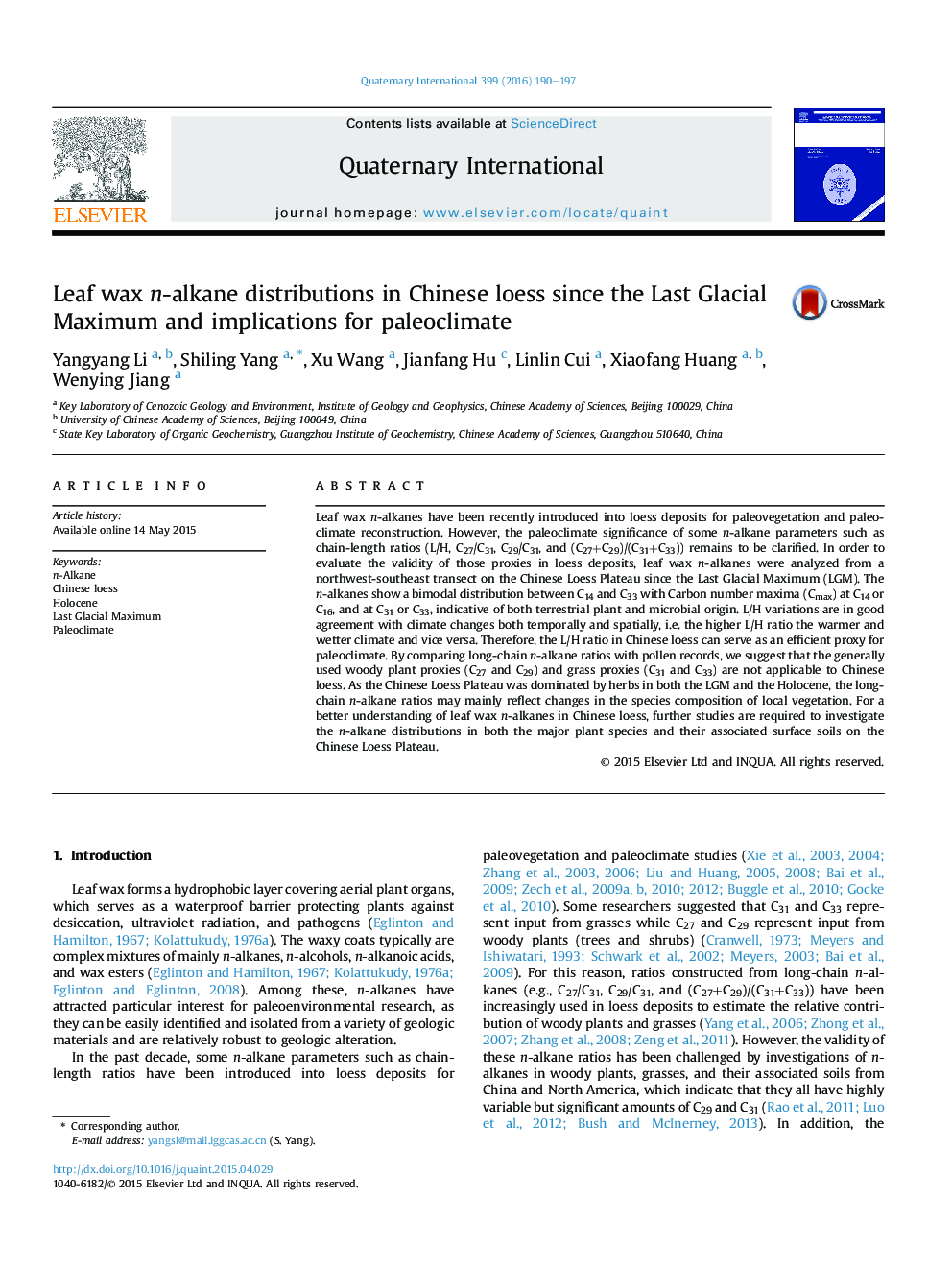| Article ID | Journal | Published Year | Pages | File Type |
|---|---|---|---|---|
| 1040268 | Quaternary International | 2016 | 8 Pages |
Leaf wax n-alkanes have been recently introduced into loess deposits for paleovegetation and paleoclimate reconstruction. However, the paleoclimate significance of some n-alkane parameters such as chain-length ratios (L/H, C27/C31, C29/C31, and (C27+C29)/(C31+C33)) remains to be clarified. In order to evaluate the validity of those proxies in loess deposits, leaf wax n-alkanes were analyzed from a northwest-southeast transect on the Chinese Loess Plateau since the Last Glacial Maximum (LGM). The n-alkanes show a bimodal distribution between C14 and C33 with Carbon number maxima (Cmax) at C14 or C16, and at C31 or C33, indicative of both terrestrial plant and microbial origin. L/H variations are in good agreement with climate changes both temporally and spatially, i.e. the higher L/H ratio the warmer and wetter climate and vice versa. Therefore, the L/H ratio in Chinese loess can serve as an efficient proxy for paleoclimate. By comparing long-chain n-alkane ratios with pollen records, we suggest that the generally used woody plant proxies (C27 and C29) and grass proxies (C31 and C33) are not applicable to Chinese loess. As the Chinese Loess Plateau was dominated by herbs in both the LGM and the Holocene, the long-chain n-alkane ratios may mainly reflect changes in the species composition of local vegetation. For a better understanding of leaf wax n-alkanes in Chinese loess, further studies are required to investigate the n-alkane distributions in both the major plant species and their associated surface soils on the Chinese Loess Plateau.
